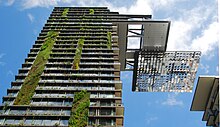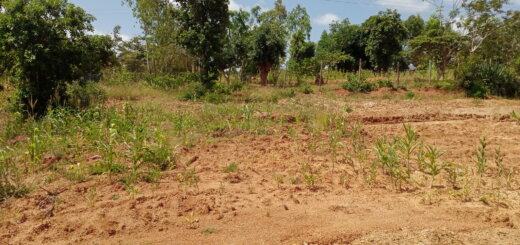Empowering Kenya’s Future: Advancing Green and Sustainable Building Practices for a Resilient Tomorrow
 Introduction
Introduction
Sustainability in construction has deep roots in Kenya’s traditional building methods. Long before “green” became a modern buzzword, many Kenyan communities used locally sourced, low-impact materials and relied on natural ventilation to cope with different climate conditions. Homes along the coast, for instance, often incorporated coral stone and thatched roofs to stay cool in hot, humid weather. In inland areas, mud walls and straw roofs offered comfortable indoor temperatures without the need for modern air-conditioning systems. Although these methods weren’t labeled “sustainable,” they demonstrated an intuitive approach to resource management.
Today, green building expands on those traditional principles by merging them with modern technologies and strategies. Passive techniques like orientation for optimal daylight and cross-ventilation are complemented by active systems, such as solar panels and energy-efficient appliances. The result is not only a reduced environmental footprint but also a building that is cheaper to operate, healthier for occupants, and more resilient in the face of climate fluctuations. In Kenya, where rapid urbanization meets emerging environmental challenges, these practices are quickly becoming essential.
Reviving Kenya’s Traditional Green Building Roots
Across the country, architects and builders are rediscovering indigenous construction techniques that, in many ways, were ahead of their time in sustainability. Materials such as adobe (compressed earth) and thatch require minimal manufacturing energy while providing natural insulation and breathability. By studying local architectural heritage, modern projects can incorporate relevant insights to achieve comfortable living spaces without high energy costs.
This approach isn’t about going backward. Instead, it’s about drawing on accumulated wisdom and updating it with modern tools. Traditional coastal architecture, for example, was adept at harnessing breezes for cooling. Contemporary building designs can improve on this by calculating wind patterns through software modeling, then creating openings and interior layouts that optimize airflow. In the end, reviving older, resource-savvy methods can go hand in hand with high-tech solutions, offering a unique Kenyan interpretation of sustainable construction.
Energy Efficiency
Energy efficiency underpins most green building philosophies worldwide, and Kenya is no exception. With electricity costs still relatively high and frequent power interruptions in some areas, reducing consumption is both economically and environmentally beneficial. Architects can make design decisions that significantly lower a building’s energy use over its lifespan. Simple strategies like orienting the building to maximize natural light help cut down on artificial lighting needs, while well-placed overhangs and properly sized windows minimize heat gain.
In addition to thoughtful design, material choices are critical. Reflective roofs or high-insulation materials can regulate internal temperatures, reducing reliance on air conditioning or electric fans. Energy-efficient appliances—from LED bulbs to energy-rated refrigerators—further trim monthly utility bills. Embracing solar power, either through rooftop photovoltaic panels or solar water heaters, is especially promising given Kenya’s abundant sunshine. When scaled up, energy-efficient construction supports national initiatives to cut carbon emissions, stabilizes the national grid by lowering overall demand, and ultimately saves money for homeowners and businesses alike.
Water Conservation
Kenya’s varied climate means that rainfall patterns can be unpredictable, with certain regions enduring long periods of drought before seeing heavy downpours. A sustainable building approach includes strategies to make the most of scarce water resources. Rainwater harvesting systems, which collect water from rooftops into storage tanks, offer a secondary supply that can be used for irrigation, cleaning, or even flushing toilets. This helps reduce dependence on municipal or borehole sources, particularly valuable in drought-prone areas.
Greywater recycling also fits neatly into the Kenyan context. Water from sinks, showers, and laundry can be filtered and reused for landscaping or toilet flushing, easing the burden on potable water supplies. Low-flow faucets, dual-flush toilets, and drip irrigation systems are practical solutions to curb water waste. On a larger scale, if entire neighborhoods or property developments integrate these features, they can significantly mitigate the challenges of water scarcity. Reduced utility bills, increased resilience to drought, and a smaller ecological footprint all emerge from applying water conservation practices in both residential and commercial real estate.
Sourcing Sustainable Materials
The choice of construction materials can make or break the sustainability profile of a building. Conventional materials like concrete and steel carry a hefty environmental footprint, given the energy required for production and transportation. In Kenya, relying on locally sourced resources can reduce both carbon emissions and costs. Compressed stabilized earth blocks, for example, are made from local soils combined with a small amount of cement, offering an eco-friendly alternative to traditional high-fired bricks. Because they incorporate locally available materials, these blocks help cut transportation emissions while engaging local labor.
Bamboo is another promising resource. Known for its rapid growth and impressive carbon-sequestration capabilities, bamboo can be used in structural elements or interior finishes. Responsibly managed forestry for timber provides a viable option as well, so long as sustainability standards are met. Such an approach avoids contributing to deforestation and promotes reforestation where appropriate. Tapping into Kenya’s abundant natural resources, all while respecting ecological limits, helps form the backbone of a truly green building industry. It also stimulates local economies, as communities become suppliers and processors of alternative materials.
Implementing Responsible Construction Practices
Adopting sustainable construction practices goes far beyond which materials are chosen. Proper site management, for instance, prevents pollution, protects water sources, and reduces waste. Construction debris can be separated into recyclable categories—scrap metal, plastics, and timber offcuts—and diverted from landfills. This lowers disposal costs and lessens environmental harm. Tools like Building Information Modeling (BIM) can streamline the design phase, reducing errors and eliminating the over-ordering of materials.
Prefabrication or modular construction offers further efficiencies. By manufacturing building components in controlled factory settings, materials are measured precisely, and waste is minimized. Though not yet widespread in Kenya, early adopters demonstrate that it can reduce construction time, lower costs, and diminish onsite waste. Showcasing such success stories can help accelerate the uptake of responsible practices across the country. As more developers, contractors, and architects see the tangible benefits—both financial and environmental—sustainable construction can become the default choice rather than an optional add-on.
Ensuring Occupant Well-being
Green building is also about healthy indoor environments. Kenyan cities, like many others worldwide, face challenges such as vehicle emissions, industrial pollution, and poor air quality in certain areas. By focusing on well-ventilated spaces and using non-toxic materials—paints, sealants, and adhesives with low volatile organic compounds—building projects can safeguard occupant health. Proper ventilation, especially in densely built-up neighborhoods, helps control humidity levels and reduce the risk of mold growth.
Natural light and indoor greenery have been linked to improved mental health and productivity. For commercial structures, this can translate into fewer sick days and greater employee satisfaction. For residential buildings, it means more pleasant, comfortable homes. Rooftop gardens and pocket parks within or around developments can improve air quality, add aesthetic appeal, and create recreational areas. Ultimately, prioritizing health doesn’t just benefit the people inside the building; it also enhances market appeal and helps maintain property value over the long term.

Green and sustainable building practices
Embracing Climate-responsive Design
Kenya’s geographical diversity—from arid regions in the north to the humid coast—makes climate-responsive design essential. Buildings that align with local weather conditions require less mechanical heating or cooling, translating into lower energy costs. In hot, dry environments, thick walls and small windows can block excess heat, while internal courtyards or atriums may allow air to flow and cool the interior naturally. Along coastal zones, elevated structures and large shaded verandas help disperse heat and moisture while taking advantage of sea breezes.
Modern modeling software can fine-tune these passive approaches by simulating airflow and temperature. Pairing such insights with traditional design elements—like angled roofs that channel cool air—helps reduce or even eliminate the need for air conditioning. The end result is a building that remains comfortable through seasonal variations. These thoughtful designs not only lighten environmental impact but also slash operating costs, freeing up resources for other needs.
Financing and Policy Frameworks
Scaling green building solutions requires policy support and creative financing. Kenya’s development roadmap, articulated in initiatives like Kenya Vision 2030, acknowledges sustainability as a key pillar. Still, turning that vision into reality involves concrete incentives. Policymakers can promote green buildings through tax benefits, expedited building permits for eco-friendly projects, or even grants for research and development. Lenders and banks might offer lower interest rates or specialized mortgage products—sometimes called green mortgages—to encourage buyers and developers to adopt energy-efficient designs.
Microfinance institutions can also fund smaller-scale community projects, enabling rural households to invest in rainwater harvesting systems or efficient stoves. These policies and financial products become powerful signals to the market, demonstrating that sustainability is both feasible and financially advantageous. Pilot programs, especially in public buildings like schools and hospitals, can further show the viability of green solutions. By seeing government investment, private developers may be more inclined to adopt similar practices.
Exploring Mixed-use Developments
Rapid urbanization has led to congested cities, with Nairobi being a prime example. Mixed-use developments—blending residential, commercial, and recreational spaces in one integrated setting—can reduce the need for lengthy commutes and combat traffic snarls. These projects often incorporate shared green spaces, waste management systems, and water recycling, amplifying the overall sustainability benefits. By design, they foster community interaction, as residents can work, shop, and socialize within walking or biking distance.
In Kenya, mixed-use developments also enable better land utilization in areas where urban sprawl has led to strained infrastructure. Through careful planning, these projects can revitalize neighborhoods, spark local economies, and reduce carbon emissions from transportation. Many modern designs feature landscaped courtyards and rooftop gardens, which add biodiversity and a sense of tranquility, even in bustling urban centers. Such features are not just aesthetic; they also serve as valuable carbon sinks and help moderate local temperatures.
Community Initiatives in Rural Areas
While major cities often make the headlines for sustainability innovations, rural communities in Kenya demonstrate grassroots leadership that can be equally transformative. Cooperatives in some regions focus on training villagers in compressed earth block manufacturing, guiding them to build sturdy homes without relying on costly imported materials. Simple solar systems, like solar lanterns and small-scale solar panels, have revolutionized off-grid energy access, reducing reliance on kerosene and other fossil fuels.
Rainwater harvesting and well-managed woodlots are other ways rural residents are taking charge of local resource management. These community-led efforts not only protect the environment but also foster self-reliance and job creation. Local construction crews skilled in sustainable techniques can serve neighboring areas, igniting micro-economies around eco-friendly practices. When scaled, these community-driven projects can significantly impact national development goals by demonstrating the real-world viability of greener building practices in remote settings.
Education and Capacity Building
Wider adoption of green building relies heavily on education for architects, engineers, contractors, and the general public. Technical colleges and universities can integrate sustainability into curricula, ensuring graduates enter the workforce with expertise in energy-efficient design, alternative materials, and climate-responsive architecture. For professionals already working in the field, workshops and continuing education programs can help them stay current on emerging technologies like passive cooling strategies or advanced building information modeling.
Beyond the technical community, raising awareness among homebuyers and renters is crucial. When people understand the benefits of green living—lower utility bills, healthier spaces, and reduced carbon footprints—they are more likely to demand these features, prompting developers to supply them. Public campaigns can spotlight successful projects and guide residents on simple actions, like installing rainwater tanks or using low-flow faucets. Engaging media outlets, social networks, and community events can spark curiosity and shift consumer preferences toward sustainability.
Integrating Renewable Energy
Kenya already relies significantly on renewables, particularly geothermal power, which supplies a portion of its electricity mix. Solar energy is another major pillar. With abundant sunshine across much of the country, rooftop solar panels or solar water heaters can drastically reduce or eliminate monthly electricity bills for certain households. In off-grid areas, solar micro-grids empower communities with consistent power for lighting, refrigeration, and even small-scale industries.
Wind power is also viable in places with favorable wind patterns, such as parts of the coast or highland areas. By diversifying its renewable energy sources, Kenya can reduce dependence on fossil fuels and bolster energy security. Green buildings that incorporate these systems often enjoy higher resale value and attract environmentally conscious buyers or tenants. Moreover, government subsidies or tax breaks can offset initial installation costs, making renewable technologies increasingly attractive to a broad range of property owners.
Advances in Technology
Technology continues to open new doors for Kenyan builders, architects, and property managers looking to optimize sustainability. Smart building systems track energy usage in real time, alerting owners to spikes or leaks before they become costly problems. Automated lighting can switch off when rooms are unoccupied, while advanced ventilation can adjust airflow based on indoor humidity or temperature. Despite appearing futuristic, such technologies have become more affordable, especially with local tech startups customizing solutions for African environments.
Digital simulation tools allow architects to model how a building will perform under different weather conditions, calculating everything from heat gain to water runoff. This upfront analysis helps refine designs, eliminating costly mistakes and material waste later. As Kenya’s tech ecosystem flourishes, opportunities to integrate software, hardware, and big data into the building process will only grow. These innovations don’t replace tried-and-true methods like good orientation or natural ventilation; rather, they enhance them, ensuring that sustainable buildings genuinely perform as intended throughout their lifetime.
Retrofitting Existing Buildings
While new construction garners much attention, retrofitting older buildings is equally important for reducing environmental impact. Many structures in urban centers across Kenya were built decades ago, using outdated methods that lead to inefficient energy and water usage. Installing better insulation, upgrading windows, and replacing aging air-conditioning units can dramatically enhance a building’s performance. Adding solar panels or switching to LED lighting further trims energy use.
Retrofitting can be more complex than starting from scratch, as it often involves structural constraints or the need to temporarily move occupants. Yet, it prolongs the life of existing buildings, conserves the resources that would have been spent on new construction, and helps maintain the architectural character of historic areas. Government initiatives like tax incentives or grants can spark a wave of retrofits, accelerating Kenya’s shift toward a greener real estate sector. For property owners, retrofits offer quick returns in the form of lower utility bills and increased property value, making it a win-win scenario for both the environment and the economy.
Collaboration for a Sustainable Future
No single entity—government, private sector, or community—can drive the green building movement alone. A collaborative ecosystem, where public agencies create supportive policies, financiers offer flexible funding, and local organizations share knowledge, is vital. Public-private partnerships can fund pilot projects demonstrating the viability of new materials or technologies. Real estate developers benefit by gaining competitive advantages through sustainability certification, while local governments can meet climate and housing targets more effectively.
Community engagement is also critical. Residents who are informed and involved in planning are more likely to embrace eco-friendly features. Grassroots input ensures that solutions resonate with local cultures, climates, and livelihoods. As this collaborative spirit flourishes, Kenya stands to gain a reputation for bold leadership in sustainable development, attracting international investment and opening new opportunities for green tech innovation. Over time, each project—be it a school, hospital, or apartment block—becomes part of a broader tapestry, illustrating how well-planned, resource-efficient buildings enrich communities and safeguard natural ecosystems.
Conclusion
Green and sustainable building practices in Kenya hold immense promise, merging environmental protection with economic growth and social benefits. By leveraging the country’s existing cultural knowledge, abundant natural resources, and evolving technologies, these methods can become the norm rather than the exception. From harnessing wind and solar power to designing mixed-use developments that reduce travel emissions, each step in the process demonstrates a commitment to holistic well-being—for individuals, communities, and the environment at large.



